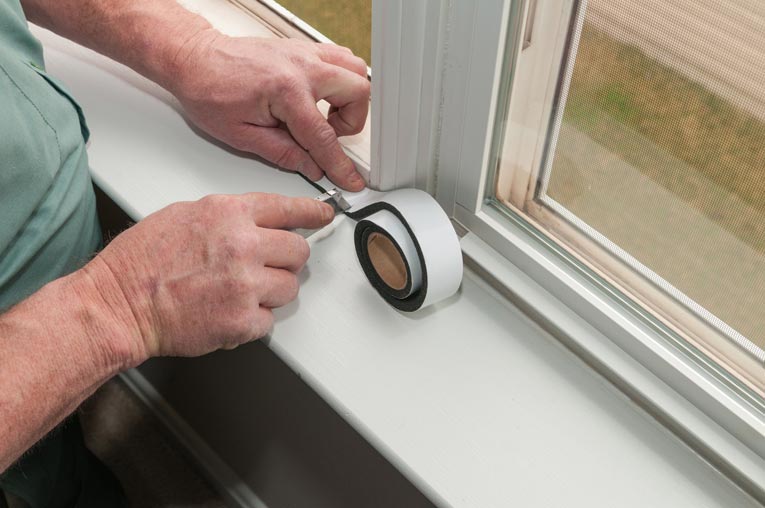With winter fast approaching, many homeowners are looking for ways to cut down on drafts in order to keep warm and maintain a handle on energy costs. One of the fastest, easiest, and cheapest ways for homeowners to cut down on energy consumption, and one of the first Energy Star home renovation recommendations is to seal all windows. Energy Star estimates that homeowners can save as much as 10 percent on their annual heating and cooling bills with an effective sealing and insulating home improvement project.
Having checked their windows for air leaks, homeowners will need to consider a number of factors before heading off to purchase weatherstripping. In order to determine how much weatherstripping a home will need, homeowners will need to measure the perimeters of all windows in the house, and then add approximately 10 percent to their figure to account for waste and cutting mistakes.
With an amount of weatherstripping in mind, homeowners must choose the type of weatherstripping that they wish to use. There are a number of options available, but the most important rule here is one of common sense – homeowners must consider the use of the window which they are sealing when considering a type of weatherstripping for their home improvement project. For example, weatherstripping destined for a window sash must take into consideration the fact that the window still has to be able to freely slide up and down to open and close. Therefore, the weatherstripping must be thin enough to allow the window to open and close, while still sealing well when the window is closed. Likewise, due to their differing movements, casement windows will likely require a different type of weatherstripping, one that allows them to be cranked closed easily.
The next step in this home renovation window-sealing project is to determine what material weatherstripping will best suit the needs of the homeowners. This is where things can get a bit complicated, as there are a myriad of options here. One idea is to select a material based on the location of the window. For example, open-cell foam and felt foam weatherstripping are usually susceptible to weather, visible, and somewhat inefficient, however, they are also extremely cheap, making them a good option for windows that are not often used and do not have serious problems with drafts. Vinyl weatherstripping is more expensive, but is far more durable and moisture resistant, making it a good option for wet climates and windows that receive a great deal of use.
Other popular options for windows include tape, which is cheap and easy to install, although not very durable, and magnetic weatherstripping, which is an excellent sealant, and virtually indestructible, although one of the most expensive options available. In the middle with regard to durability are reinforced silicone, fin seals, and tension seals, amongst others.
Upon choosing a material, homeowners are ready to install their weatherstripping. This is generally a simple process, with common sense dictating a couple of tips. The first of these is to measure twice before cutting, and to remember to clean and dry all windows before application. Homeowners should let the instructions included be their guide, keeping in mind that weatherstripping windows involves applying the sealant between the sash and frame, which will not interfere with the proper operation of the window, assuming an appropriate type of weatherstripping has been selected.












